Uncovered in southern Moravia, this 13th-century B.C.E. breastplate was found surrounded by a sacrificial burial of weapons including a battle axe and a harpoon.
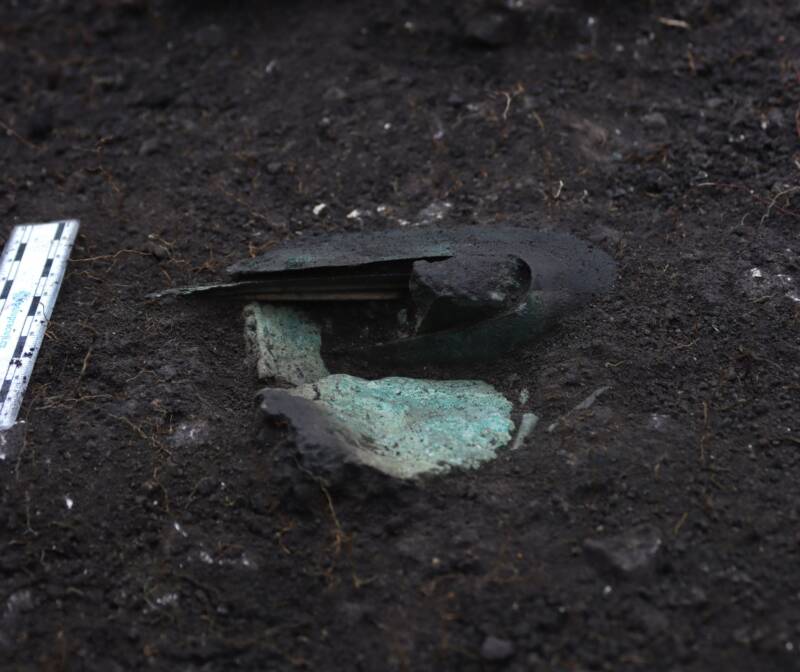
Brno City MuseumThe folded piece of bronze armor found in southern Moravia.
Archaeologists from the Czech Republic’s Brno City Museum announced the discovery of a rare fragment of Late Bronze Age armor dating back to a period often associated with the Trojan War immortalized in Homer’s Iliad.
The damaged piece of chest armor was found as part of a buried hoard that also included a spearhead, sickle, bronze pin, axe, harpoon, and other metal artifacts. The hoard itself was discovered in 2023 at an undisclosed location in southern Moravia, thanks to both professional archaeologists and amateur metal detectorists.
Experts believe the armor and other artifacts had been intentionally damaged and deposited together, most likely as part of a ritual offering.
A Seemingly Insignificant Piece Of Metal Proves To Be A Piece Of Ancient Armor
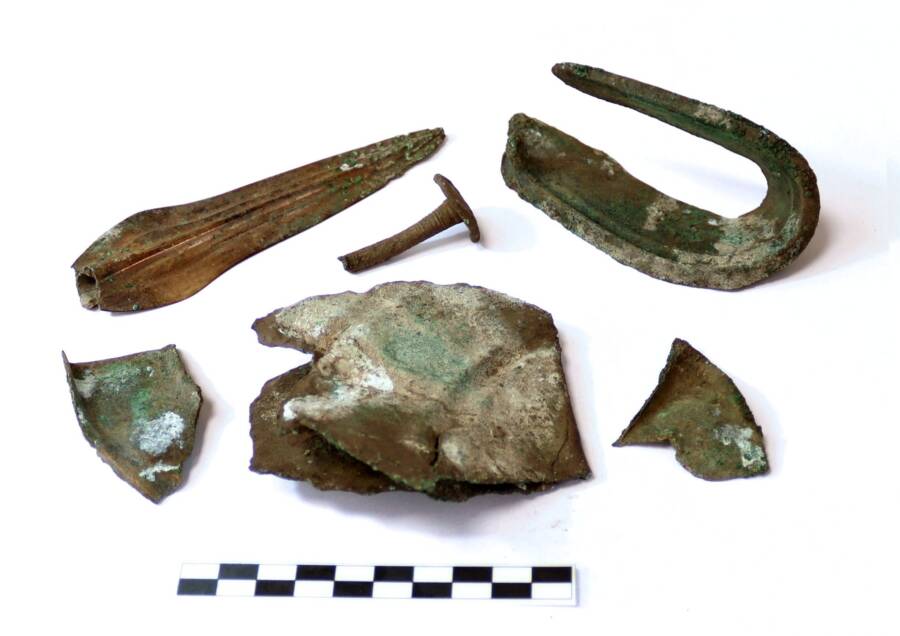
Brno City MuseumThe Late Bronze Age hoard discovered at the undisclosed location in the Czech Republic.
At the time of the discovery, archaeologists were not aware that they had found a piece of armor. Instead, it seemed to be nothing more than a folded, decaying sheet of metal. It was only after digitally “unfolding” the sheet using an advanced 3D scan that they realized it was actually a piece of a chest plate worn by a Bronze Age warrior.
“The fragment dates to 3,200 years ago — the period where historians place the Trojan War,” the museum said in a statement. “Bronze weapons were then a privilege of the warrior elite, and their production required extraordinary craftsmanship.”
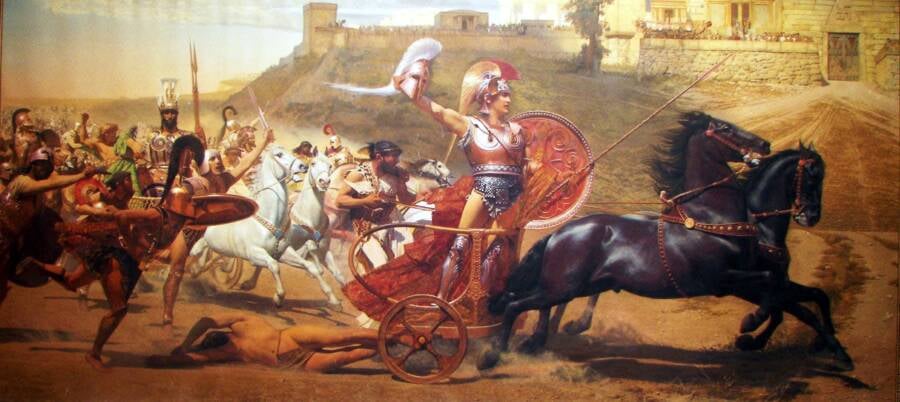
Public DomainThe Greek hero Achilles during the Trojan War, depicted in armor similar to that found at the site.
The 3D scan also revealed decorative features on the breastplate, including solar symbols around the nipples and triangular decorations in an embossed wave.
A Rare Discovery Made By Both Professional And Amateur Archaeologists
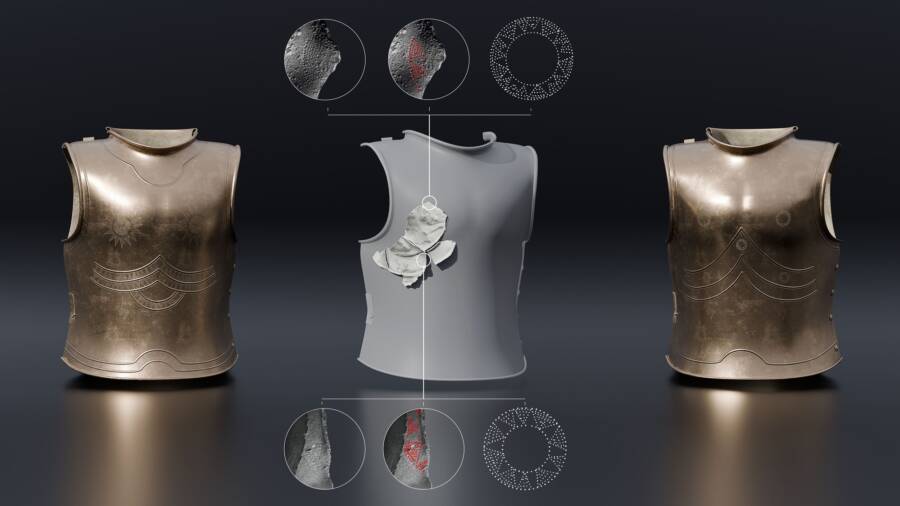
Brno City MuseumA 3D scan and recreation of the bronze armor.
Speaking with Czech Television, archaeologist Aleš Navrátil noted that this is only the second known example of bronze armor from this period ever found in the Czech Republic. At that time, the Moravian territory was inhabited by groups of unrelated people with shared customs. They were not a single nation, but they had much in common.
When the Slavs arrived later, they settled in the same places. As Navrátil said, they effectively “inherited” the landscape from the cultures that preceded them. This only further highlights the rarity of this piece of armor — no commoner would have had access to such a piece. In Homer’s Iliad, for example, Diomedes says the value of a set of armor is nine bulls.
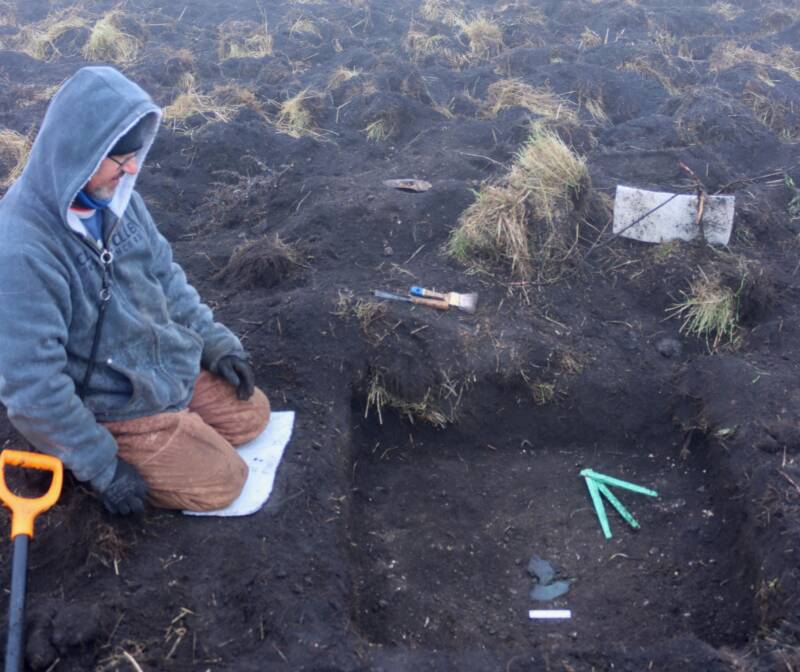
Brno City MuseumArchaeologists at the site where the hoard was discovered.
Zbyněk Šolc, the director of the Brno City Museum, emphasized the significance of public cooperation in the discovery:
“This find confirms the importance of long-term cooperation between experts and the public, which is crucial for our museum. Thanks to it, we can discover and protect valuable artifacts that bring us closer to ancient eras and bring new knowledge about our history.”
After reading about this bronze armor discovered in the Czech Republic, learn more about the classical mythology that inspired Homer’s works by reading about the Greek gods of Mount Olympus. Then, read the stories of some of the most fearsome Roman gladiators to ever exist.





